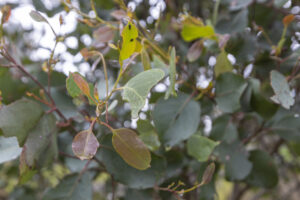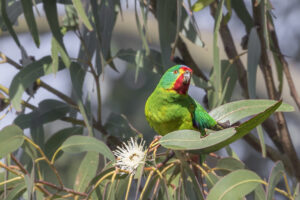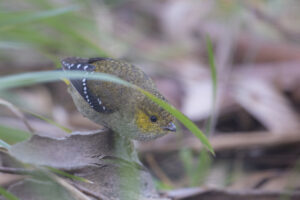Who are the Black Gum Conservation Group?
We would like to introduce you to the Black Gum Conservation Group – the newest of Wildcare Tasmania’s volunteer groups.
Why Black Gum?
Black Gum (Eucalyptus ovata) forest and woodland is a threatened vegetation community in lutruwita/Tasmania protected under state and Commonwealth legislation. This vegetation community provides important habitat for many endangered, and critically endangered species including the swift parrot and the forty-spotted pardalote.
The endangered forty-spotted pardalote depends on E. ovata forest and woodland communities for habitat where Eucalyptus viminalis (White Gum) occurs as a dominant or subdominant, particularly on islands off mainland lutruwita/Tasmania. Mature E. ovata trees are considered to be essential feeding habitat during the early breeding season for the critically endangered swift parrot.
Since European settlement of lutruwita/Tasmania, E. ovata forest and woodland has been cleared extensively for agricultural development. Most patches are now less than 10 hectares and old growth stands are extremely rare. Such fragmentation leaves remnant patches exposed to dry season dieback, invasion by weeds, and genetic pollution from adjacent commercially grown Eucalyptus nitens.
Why form a Group?
Black Gum Conservation Group is dedicated to re-establishing and protecting E. ovata forest and woodland across lutruwita/Tasmania. We aim to achieve this through E. ovata revegetation projects on public and private land, where volunteers can get involved with fundraising, weeding, tree planting and ongoing monitoring.
How can I get involved?
Become a member of Wildcare Tasmania and join the BGCG branch (by clicking ‘Join this Branch’ on their page here) to keep up to date with current projects and future volunteering opportunities. If you have more questions, want to get involved behind the scenes, or you’re interested in a revegetation project on your land, you can reach us at blackgumconservationgroup@yahoo.com


